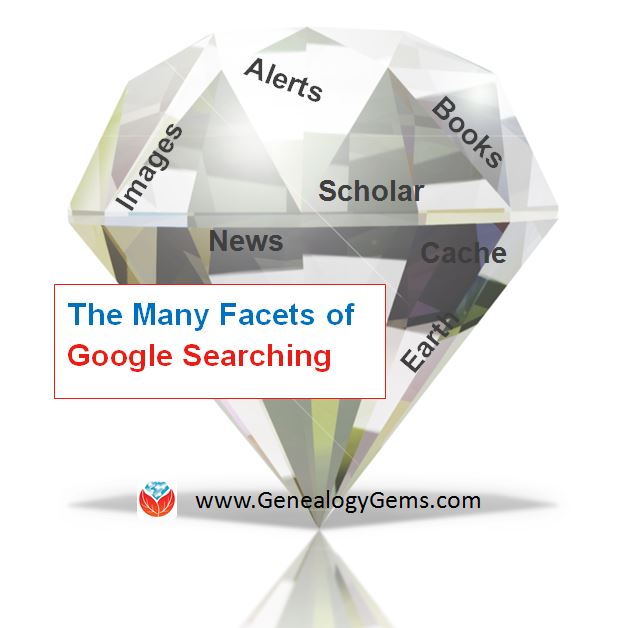Family Migration Patterns Just Got a Big Bump with DNA!
Do you need help solving your family migration patterns? A groundbreaking new scientific study uses DNA and family trees to map migration routes across North America.
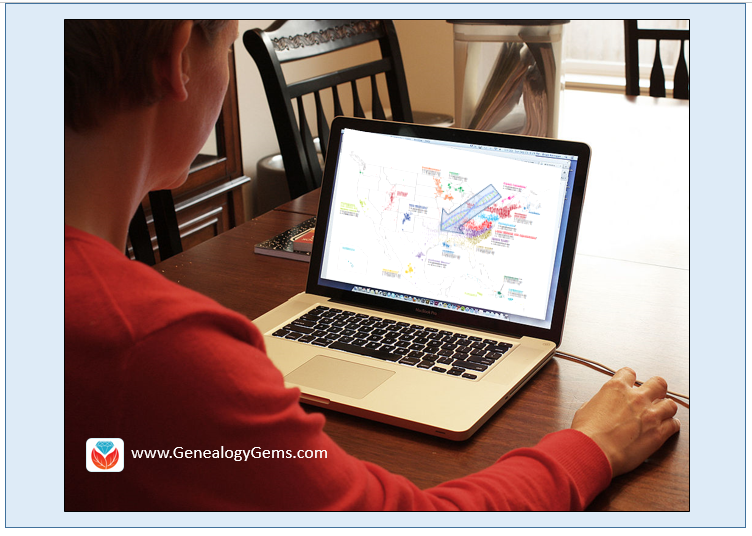
Family Migration Patterns Revealed in Genomes
A new study published in Nature Communications represents a ground-breaking development in using DNA for genealogy. The article from the AncestryDNA Scientific Team is titled Clustering of 770,000 genomes reveals post-colonial population structure of North America. Or, in more understandable terms, “Your DNA can tell us where you came from in America in the last 500 years.”
Wow, right? So, how did they do this?
The power really is in the numbers. In this particular paper, they started with using their autosomal DNA test on 770,000 people. Some of them were AncestryDNA customers who had consented to be part of the research. From these 770,000, they learned quite a bit about the migration patterns of early Americans. As Ancestry analyzes more individuals using these same principles of correlating genetics and genealogy, this data will improve and be able to tell us even more about our heritage. Even though it takes a large data set to figure out the relationship between our DNA and migration patterns, it really comes down to the relationship of two people.
To start, Ancestry determines how just two people are genetically related. Then, they find how those two are related to a third person, again, looking only at pairs of people. This goes on and on until everyone in the group as been compared. They use a graph to plot those relationships, with those more closely related clustering around each other. And then it happens. The point where we see the marriage of genetics and genealogy suddenly appear by adding in the family history information for each of these individuals in the cluster.
What they found was astounding. They have displayed the data in Figure 3 shown below. It is a map of the United States with colored dots scattered across the landscape. The location of the dots corresponds to the genealogy of those tested, while the color of the dots relates to their genetic clustering. Those who cluster closest together are the same color. The result is a nearly perfect rainbow, with buy anti anxiety medication online uk each color holding its respective spot on the map, with very little overlap between groups.
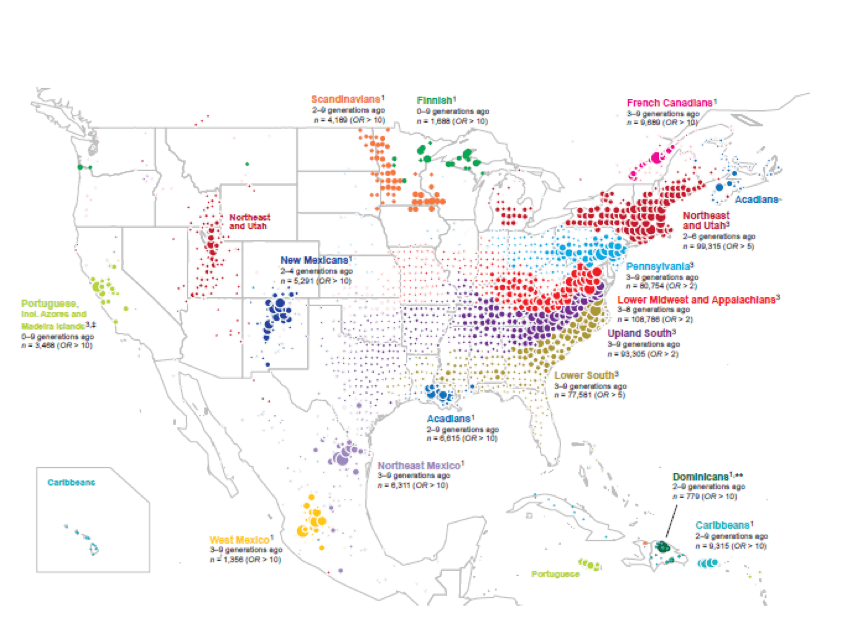
Distribution of ancestral birth locations in North America. Summary map from Nature Communications; click to see article with full explanation of map data. Image used with permission of Ancestry.com.
We might be tempted when looking at the map to think, oh, well, of course there is a large population of European Jews in New York, everyone knows that. But this isn’t their family history, their accent, or their culture telling us this – it is their genetics!
As if that wasn’t exciting enough, the scientists describe how we can trace family migration patterns of different groups over just a few generations. They specifically mention French Canadians and Cajuns/Acadians, but the same principle can theoretically be applied to dozens of other groups.
Family Migration Patterns and Applying these Findings
 So what does this mean for you as a genealogist?
So what does this mean for you as a genealogist?
It means we are getting closer than ever to being able to tell who you are and where you came from using your DNA.
For example, let’s say you have an ancestor in Texas about 4 generations ago, but you aren’t sure where she came from. Your DNA could tell you that you fit into the Lower South group, meaning that your ancestor likely hails from the south. Or, maybe your genetics identify with the Upland South, which means you need to explore records from Arkansas, Tennessee, and North Carolina.
This is just a glimpse into the advances that genetics are bringing to your genealogy toolbox these days. So it’s high time to go “all in” to learn about genetic genealogy! We recommend The Family Tree Guide to DNA Testing and Genetic Genealogy by Blaine Bettinger. You’ll love this book if:
- You’ve got brick walls that traditional research methods haven’t been able to break down
- You want to take advantage of the hottest tool in genealogy
- You’ve already taken a DNA test and want to know what comes next
Disclosure: This article contains affiliate links and Genealogy Gems will be compensated if you make a purchase after clicking on these links (at no additional cost to you). Thank you for supporting Genealogy Gems!
Celebrating 1000 Genealogy Blog Posts: #8 in the Top 10 Countdown
It’s no surprise to find another DNA post in the #8 spot on our Top 10 genealogy blog post countdown. The topic: understanding your AncestryDNA matches.
In this post, Genealogy Gems resident DNA expert Diahan Southard takes on a confused question sent in by a listener, who didn’t understand why certain people were showing up in her AncestryDNA results.
This post explains SO beautifully a couple of key concepts:
- the difference between your AncestryDNA genetic matches and the DNA Circles/New Ancestry Discoveries that pull from both your genetic results and your family tree; AND
- three reasons someone may show up in your AncestryDNA matches as a New Ancestry Discovery–and which one of those scenarios actually helps your research.
Since running my own autosomal test through AncestryDNA a few months ago, I find myself coming back repeatedly to Diahan’s series of posts to help me 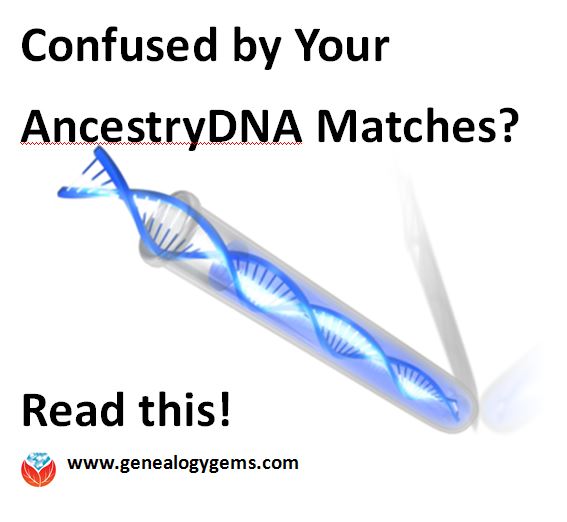 better understand and use those results. I know I’m not alone, since three of Diahan’s DNA posts made our Top 10 this year! (We covered #10 yesterday.)
better understand and use those results. I know I’m not alone, since three of Diahan’s DNA posts made our Top 10 this year! (We covered #10 yesterday.)
Click here to read the above post, and click here to find a list of all DNA-related posts on our genealogy blog.
 If you’ve done your homework and decided that an AncestryDNA test is what should be next for your family history research, thank you for purchasing one by clicking here. Your purchase supports the free Genealogy Gem blog and podcast. (Thank you! YOU are a gem!)
If you’ve done your homework and decided that an AncestryDNA test is what should be next for your family history research, thank you for purchasing one by clicking here. Your purchase supports the free Genealogy Gem blog and podcast. (Thank you! YOU are a gem!)
Disclosure: This article contains affiliate links and Genealogy Gems will be compensated if you make a purchase after clicking on these links (at no additional cost to you). Thank you for supporting Genealogy Gems!
Free Video: Powerful Google for Genealogy Search Strategies
Boost your Google search skills with this free video class on Google for genealogy, presented at RootsTech 2016 by Google expert Lisa Louise Cooke.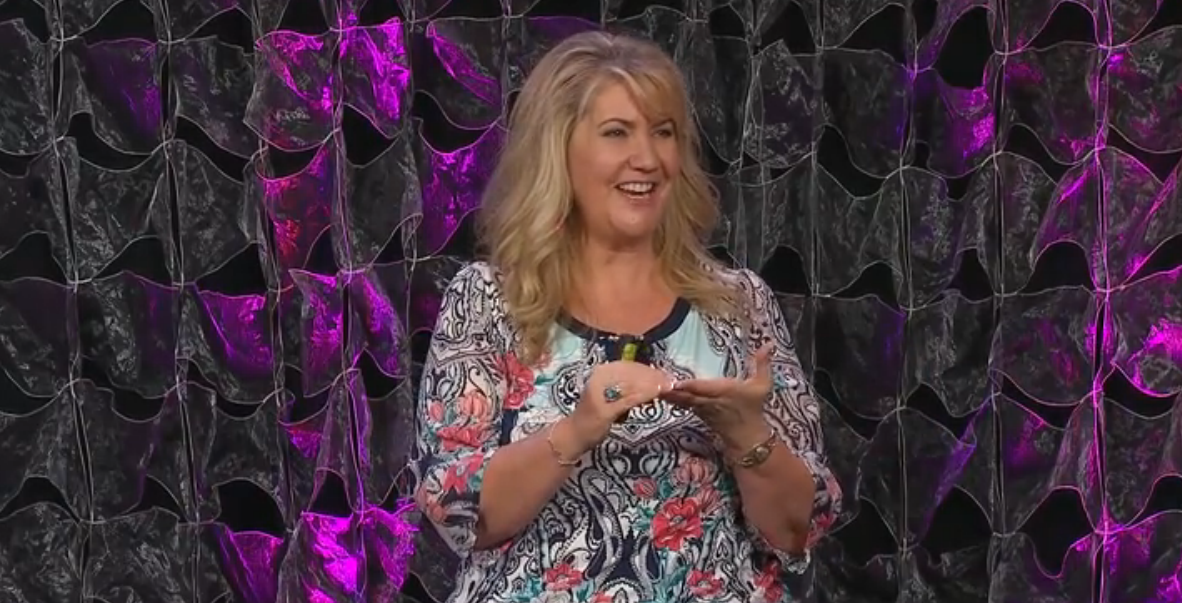
“Everyone should be using Google to search for their family history!” That’s Lisa Louise Cooke’s mantra. Google reaches deep into so many different kinds of content on the internet. Google search tools help us discover ancestors’ names mentioned online; locate records we need; and discover historical details, images and maps that help us better understand their lives. And Google is FREE.
But Google works best when you follow a well-executed search methodology, just like in other aspects of genealogy research. At RootsTech 2016, Lisa taught a powerful and popular Google search for genealogy methodology class to a packed audience in a session that live-streamed around the world. Watch her dynamic, informative class below for free. Kim wrote in to say that the class “was the best one I’ve seen thru the free streaming [RootsTech]….Thanks for sharing free content with those of us who can’t afford to spend any money on genealogy.”
 This class content comes from Lisa’s book, The Genealogist’s Google Toolbox (2nd edition). In it you’ll find all you need to know to take your hit-and-miss online searches to a powerful, proven search methodology for finding your ancestors online–and everything else you’re looking for! There are step-by-step instructions, screenshots and powerful examples for topics such as basic and advanced Google searching, Google Books, Google Earth, Google Scholar, Google Alerts, Google Translate and even YouTube.
This class content comes from Lisa’s book, The Genealogist’s Google Toolbox (2nd edition). In it you’ll find all you need to know to take your hit-and-miss online searches to a powerful, proven search methodology for finding your ancestors online–and everything else you’re looking for! There are step-by-step instructions, screenshots and powerful examples for topics such as basic and advanced Google searching, Google Books, Google Earth, Google Scholar, Google Alerts, Google Translate and even YouTube.
More Google for Genealogy Gems
Keep learning from Lisa! Click below to read more proven Google search methodologies for genealogy.
7 Google Search Features You Should be Using
2 Mysterious Deaths in the Family? Time To Google Them!
How to Use Google Chrome to Identify Old Photos for Genealogy
Learn how to use Google Chrome to identify old photos for genealogy and family history with this quick and easy-to-follow YouTube video!

How to Use Google Chrome to Identify Old Photos for Genealogy and Family History
Take 4 & 1/2 minutes to watch this video from our Genealogy Gems YouTube Channel. Your family history will be glad you did!
Like I said, there is more than one web-browser out there. Maybe you are a fan of Firefox or Internet Explorer, but I want you to head on over to Google Chrome to see this really slick feature.
Why Google Chrome Image Search Works
Google Chrome can do a lot of amazing tech things. By learning how to use Google Images, you may be able to finally identify some of those old pictures you have stuffed around the house! This technique works especially well for identifying locations, maps, and high profile buildings. Why does this work? Google has a stellar process for surfing the web (they call it “crawling”) and indexing everything it finds. This effort builds an incredible wealth of information, including information on all of the photos and images it comes across. Google Chrome, Google’s web-browser, can use this data to quickly match your image to other images Google has crawled on the web. Not only can it find the image, but it can bring along with it any other information (such as details about the image) that is attached to the image. And that can all mean big answers for you!
Take It Further: Identify Original Locations of Images and Photos
In my video, I share with you how I used Google Chrome to identify an old family postcard. In this blog post today, I want to share another tip for using Google Chrome to identify old photos. It never fails.
If you’re like me, you get pretty excited as you make family history discoveries. You might find yourself saving documents and pictures to your computer without accurately sourcing from whence they came. Six months later you find yourself wondering, “Where in the world did that image come from?”
Google Chrome can help. Just use the step-by-step instructions found in the video to upload the image to Google Images, and click the Search by Image button. Voila! Google finds the match and you uncover the website where the image came from! This saves valuable time (and I think we can all use more of that) and provides the information you need to properly cite your image source.
Sharing is Caring
Thanks for watching and reading, friends. Did you share this tech-tip video with your genie buddies? I hope you did. For more tech-tips and savvy tricks, be sure to subscribe to our Genealogy Gems YouTube Channel.
More Free Tech Tip Videos
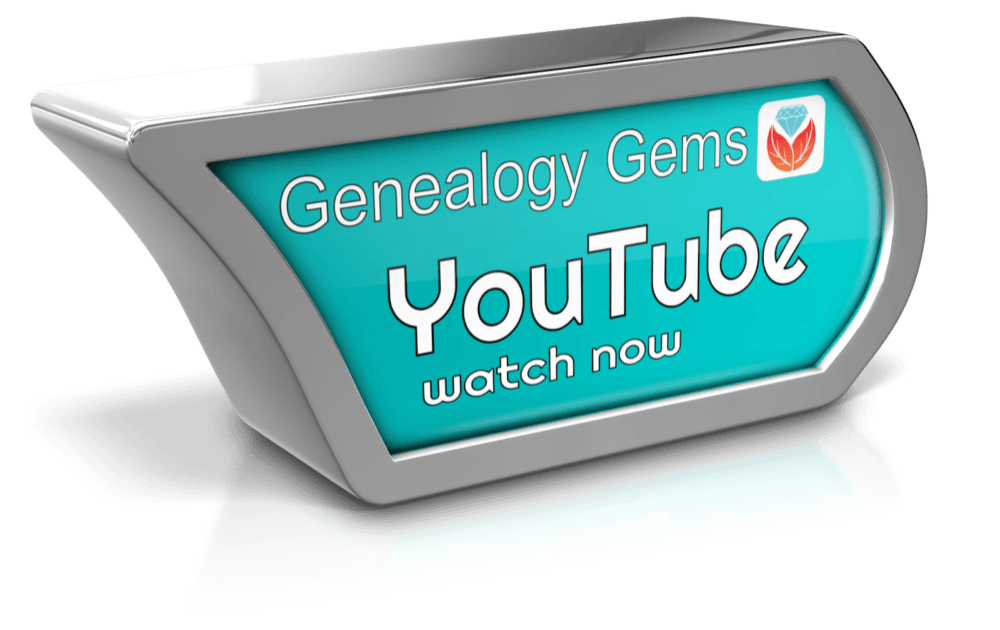
Free Google E-Books for Genealogy and Family History
Mobile Genealogy Tips and Tricks
Create Captivating Family History Videos

